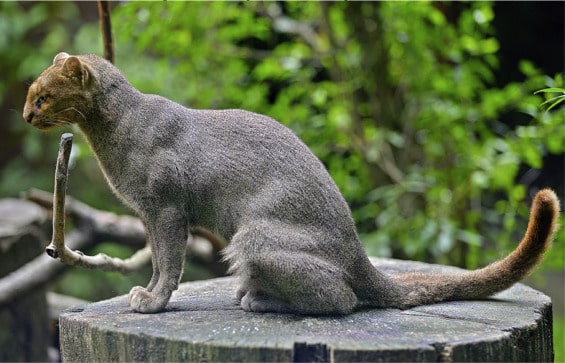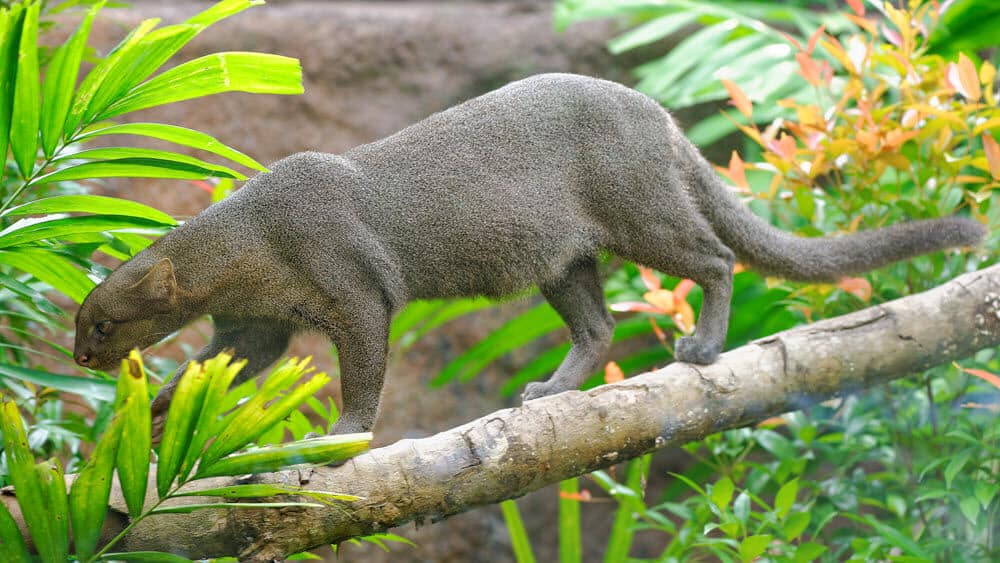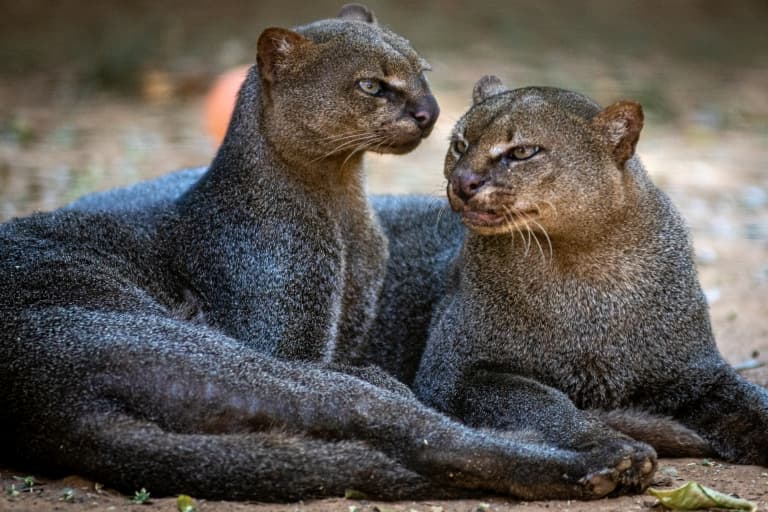What is a jaguarundi, and where is it found?
The jaguarundi sometimes called the otter cat, is a fascinating small wild cat native to the Americas. This enigmatic feline boasts a unique appearance and behavior, setting it apart from other cats in the region.
Found in various countries across North, Central, and South America, the jaguarundi inhabits diverse habitats, showcasing its adaptability and resilience in the face of environmental challenges.
Exploring its mysterious nature and habitat preferences can shed light on the importance of conserving this lesser-known species for future generations.
What is the scientific name and classification of jaguarundi?
The jaguarundi, scientifically known as Puma yagouaroundi, belongs to the Felidae family. It holds a distinct taxonomic position and is classified as a species under the Puma genus.
While it shares the name “jaguar,” the jaguarundi is not closely related to the jaguar species, which belongs to the Panthera genus. Instead, the jaguarundi is more closely related to other wild cats like the cougar and the cheetah.

Where does the jaguarundi live, and what are its habitat preferences?
Jaguarundis have a wide distribution range, its range extends from central Argentina in the south to northern Mexico, through Central and South America east of the Andes. They can be found in various habitats, including forests, grasslands, swamps, and even scrublands.
These adaptable felines are known for their preference for dense vegetation and habitats close to water sources, making them highly versatile in their choice of environments.
What does the jaguarundi look like, and what makes it unique?
The jaguarundi, scientifically referred to as Puma yagouaroundi, is an extraordinary New World cat that stands apart for its distinctive physical traits. Resembling an amalgamation of weasel-like features, this feline exhibits a remarkably unique appearance.
Its body boasts an elongated and slender form, with a small flattened head, short legs, and a lengthy tail. Its ears are rounded and short, enhancing its overall appearance.
What are the physical characteristics and size of a jaguarundi?
Adults are normally 90 to 130 cm (36 to 51 inches) in length, including a tail measuring between 30 to 60 cm. Its height at the shoulder is between 25 to 30 cm, and it weighs around 4.5 to 9 kg (10 to 20 pounds).
The jaguarundi’s exceptional variation in color phases – the reddish-brown eyra and the gray form – adds to its allure. Notably, some litters may even feature kittens displaying both color variations, adding to the species’ remarkable diversity.
What are the different fur colorations and patterns of the jaguarundi?
With a body structure reminiscent of weasels and otters, this feline exhibits a distinct elegance. It is characterized by a unique set of color morphs: a dark form and a red morph. The dark morph encompasses uniform black, gray, or brown hues, occasionally appearing slightly lighter on the underside.
In contrast, the red morph showcases a spectrum ranging from tawny yellow to a vibrant chestnut red. The absence of typical feline markings, such as spots or stripes, adds to the jaguarundi’s intrigue.
Its striking similarity to weasels, particularly the dark morph, occasionally leads to confusion with the tayra. However, differences like the elongated tail, short hair, and the absence of the tayra’s distinctive yellow throat spot distinguish the jaguarundi.

What are the behaviors and hunting habits of the jaguarundi?
Is the jaguarundi nocturnal, and how does it hunt?
These cats aren’t only awake at night (nocturnal); they’re also active during the early morning and evening (crepuscular). It’s like they’re the best at catching the sunrise and sunset!
Now, when it’s time to eat, jaguarundis become sneaky hunters. They have long bodies and short legs, which helps them move quietly through the bushes and grass. They’re like secret agents in the animal world! They use a mix of stalking and surprise to catch their prey. Sometimes, they even climb trees and dive into water to catch their food.
What does the jaguarundi eat, and what are its preferred prey items?
So, what’s on the menu for jaguarundis? Well, they’re meat lovers, just like some of your favorite animals at the zoo. They like to munch on small animals like mice, rabbits, and birds. But guess what? They’re not picky eaters. Depending on where they live, they might also snack on things like lizards, frogs, and even fish when they’re near water.
Jaguarundis are pretty flexible with their food choices. They’re like food adventurers, trying out different things to eat. This helps them survive in different places. These furry hunters play an important role in keeping nature balanced by controlling the number of small animals around them.
How do jaguarundis reproduce, and what is their life cycle?
Jaguarundis are polygynous, that means they one male can mate with multiple females. Breeding may take place at any time of the year.
How long is the gestation period, and how many offspring do they have?
After all the lovey-dovey stuff, jaguarundis become parents! The time between when female becomes pregnant and when she gives birth is called the “gestation period.” For these wild cats, it’s around 70 to 75 days.
A litter of baby jaguarundis usually has 1 to 4 kittens. It’s like having a small cat family! These babies are tiny and blind at first, but they grow up fast. Mom takes great care of them, feeding and protecting them until they’re ready to explore the world on their own.
The young ones gain independence at around 10 months of age and reproductive maturity is reached at about 2-3 years of age.

How do jaguarundis interact with humans?
Well, these wild cats are a bit shy and like to keep their distance. They’re not like your pet cats at home that might come up to you for cuddles. Jaguarundis prefer to stay hidden and avoid people.
Sometimes, they might cross paths with humans when their homes overlap. But they usually try to stay away from places with lots of people.
Can you pet a jaguarundi?
Imagine having a jaguarundi as a pet – wouldn’t that be cool? But guess what? It’s not a good idea. These wild cats are meant to be in the wild, hunting and exploring. They have different needs compared to the cats we keep at home.
Jaguarundis are wild animals, they are not your regular furry friend, and they might not feel comfortable around people. Plus, in many places, it’s not allowed to keep them as pets because they’re a protected species. It’s important to let them be free and happy in their natural homes.
What is the Lifespan of the Jaguarundi?
Jaguarundis, these cool and mysterious wild cats, usually live around 10 to 15 years in the wild. That’s like having a bunch of birthdays and celebrations in the animal world! But, you know, some lucky ones might live a little longer, while others might face challenges that make their lives shorter.
Their lifespan depends on many things, like where they live, finding enough food, and staying safe from dangers. When they’re in places with plenty of food and safe homes, they might have a better chance of living longer.
Population and Status
Ever wondered how the fascinating jaguarundi is doing in the wild? Well, researchers have been digging into its life, and here’s what they found!
According to the IUCN Red List, they’ve been keeping an eye on these cats. Research has shown that the jaguarundi isn’t a common species you’d bump into every day. They live in smaller numbers and are kind of spread out. In some places, like Argentina, they’re considered “Near Threatened,” and in Mexico, they’re even called “Threatened.”
But wait, here comes the twist. When you look at the whole planet, the big picture says they’re in the “Least Concern” zone. That might sound great, but there’s a catch. Their numbers might be dropping. It’s like a warning sign blinking in the wild.
Nobody really knows exactly how many jaguarundis are out there. They’re not threatened by the bad guys in the illegal fur trade. That’s why the IUCN has put them in the “Least Concern” category.
Jaguarundis are VIP guests in many places. They’re protected across a lot of their homes. They are protected in Argentina, Belize, Bolivia, Colombia, Costa Rica, French Guiana, Guatemala, Honduras, Mexico, Panama, Paraguay, Suriname, Uruguay, U.S. and Venezuela. They are not legally protected in Brazil, Ecuador, El Salvador, Guyana or Nicaragua.

